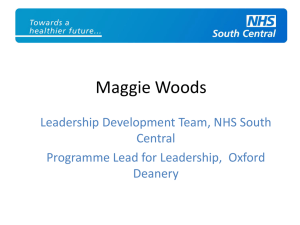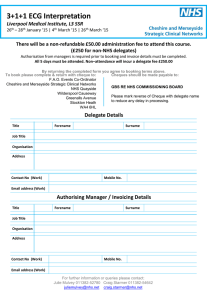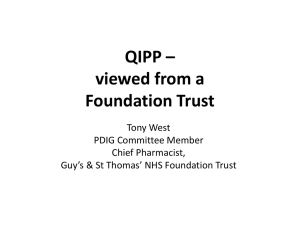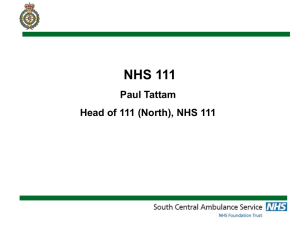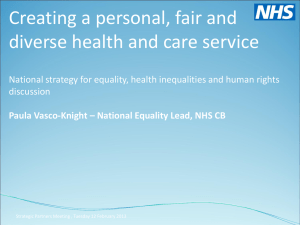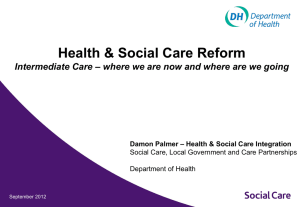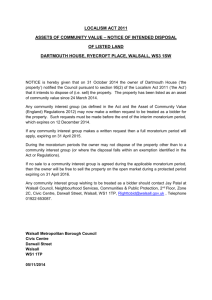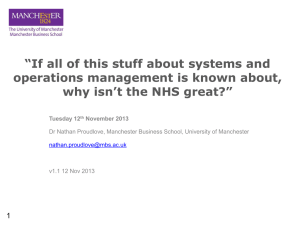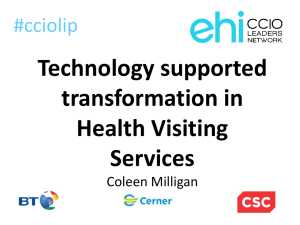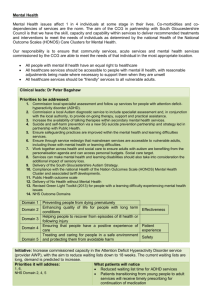SIP for QIPP: Stimulating a Culture of Service Improvement
advertisement
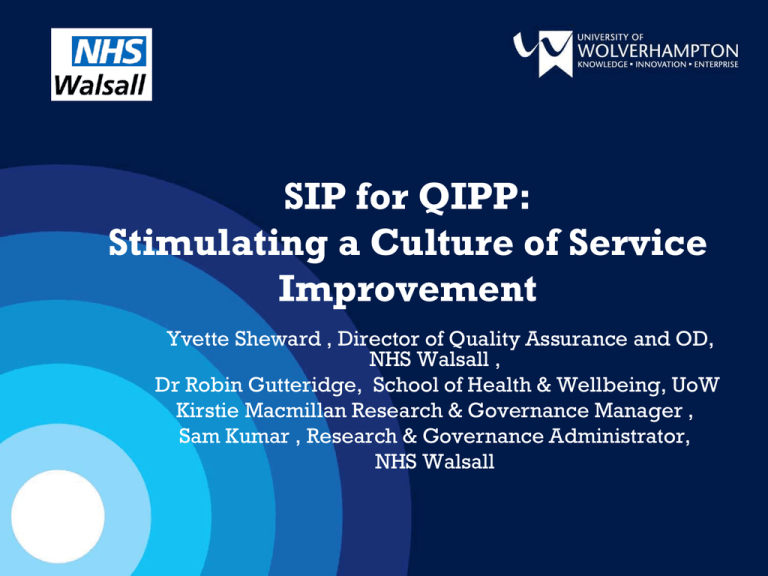
SIP for QIPP: Stimulating a Culture of Service Improvement Yvette Sheward , Director of Quality Assurance and OD, NHS Walsall , Dr Robin Gutteridge, School of Health & Wellbeing, UoW Kirstie Macmillan Research & Governance Manager , Sam Kumar , Research & Governance Administrator, NHS Walsall Background drivers • University implementing NHS Institute (free) offer to embed Service Improvement methodology in undergraduate curricula • NHS Trust R&D committee stimulating Service Improvement culture: – Quality enhancement as a collective responsibility – Simple processes, realistic for all – Contribute to QIPP agenda Aims of this collaboration • To enable Trust staff to understand and utilise the methodology students are taught – For Organisational Development, iteratively to build quality, safety & patient experience – To support practice learning more effectively – To minimise theory/ practice gap – To instil confidence in graduates to grow the desired culture for the sustainable future Actions – Joint meeting NHS Institute Lead, Director of OD, NHS Walsall, Associate Dean for Curriculum Innovation, SHaW – PDSA (Plan Do Study Act) Cycle selected – Joint workshop for staff, of both organisations and students – Small projects scheme funded by NHS Walsall, managed by R&D committee – Follow up work with Practice Placement Teams and curriculum design teams Small projects scheme • R&D committee made a case for funding to Exec and Board • 16k set aside for 6 month pilot, publicised via health economy Intranet • QIPP Criteria developed by R&D team • Individual mentorship to successful applicants provided by R&D members • Outcomes presented at Quality event Learning for future sustainability – Small funds are sufficient to stimulate and impact – Careful marketing is needed to achieve positive perception – Dissemination needs to be a requirement – Co-ordination and administration takes more time than anticipated – Most projects over-run slightly; needs to be managed with care Conclusion • This approach to Service Improvement has potential as a relatively low cost, high impact approach to embed a culture of quality enhancement as everyone’s responsibility • The collaborative, joined up approach was helpful






